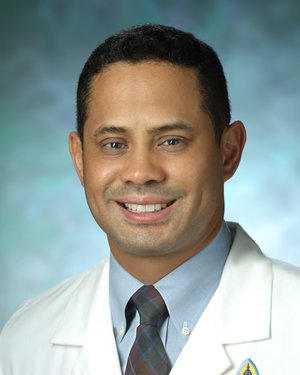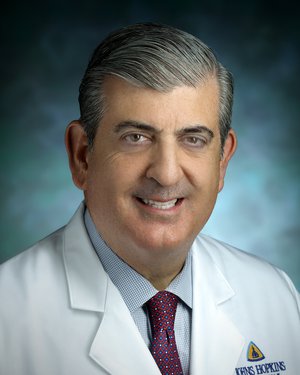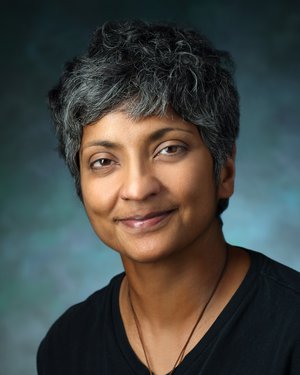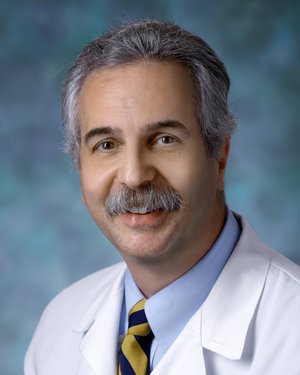Research Lab Results
-
HEPIUS Innovation Lab
Led by Drs. Nicholas Theodore and Amir Manbachi, the HEPIUS team unites neurosurgeons, biomedical engineers, scientists, radiologists and other physicians to treat and diagnose spinal cord injuries -
Sivanesan Neuromodulation Laboratory (SNL)
Work in the Sivanesan Neuromodulation Laboratory (SNL) focuses on developing electrical stimulation therapies for treating neuropathic pain conditions and discovering novel applications for patients suffering from painful conditions. We study mechanisms of all modalities of spinal cord stimulation in the laboratory and aim to rapidly translate these discoveries to patient care. This bench to bedside approach facilitates a unique integration of the latest science with the clinical care of patients.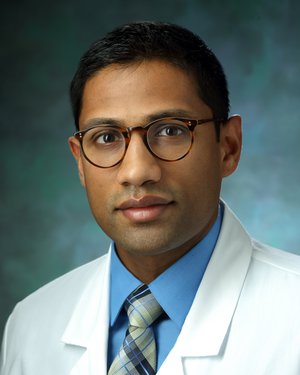
-
Shanthini Sockanathan Laboratory
The Shanthini Sockanathan Laboratory uses the developing spinal cord as our major paradigm to define the mechanisms that maintain an undifferentiated progenitor state and the molecular pathways that trigger their differentiation into neurons and glia. The major focus of the lab is the study of a new family of six-transmembrane proteins (6-TM GDEs) that play key roles in regulating neuronal and glial differentiation in the spinal cord. We recently discovered that the 6-TM GDEs release GPI-anchored proteins from the cell surface through cleavage of the GPI-anchor. This discovery identifies 6-TM GDEs as the first vertebrate membrane bound GPI-cleaving enzymes that work at the cell surface to regulate GPI-anchored protein function. Current work in the lab involves defining how the 6-TM GDEs regulate cellular signaling events that control neuronal and glial differentiation and function, with a major focus on how GDE dysfunction relates to the onset and progression of disease. To solve these questions, we use an integrated approach that includes in vivo models, imaging, molecular biology, biochemistry, developmental biology, genetics and behavior. -
Kayode Williams Lab
The Kayode Williams Lab conducts translational research on neuromodulation. We primarily examine the mechanisms and efficacy of spinal cord stimulation in treating neuropathic pain, peripheral neuropathies and peripheral vascular disease. Our clinical trials explore spinal cord stimulation in the treatment of painful diabetic neuropathy and the treatment of critical non-reconstructible critical leg ischemia. We also have a longstanding interest in the business of medicine and seek to enhance value propositions for hospitals and physician groups through more effective management of resources.
-
Vascular Neurology Lab
Vascular research led by Rafael Tamargo, M.D., the Walter E. Dandy Professor of Neurosurgery, explores treatment of aneurysms, arteriovenous malformations, cavernous malformations, and arteriovenous fistulas of the brain and spinal cord. Basic science research has focused on endothelial cell-leukocyte interactions (inflammation) after subarachnoid hemorrhage and identifying drugs that might inhibit this inflammatory response as well as the narrowing of blood vessels. -
Kunisaki Lab
The Kunisaki lab is a NIH-funded regenerative medicine group within the Division of General Pediatric Surgery at Johns Hopkins that works at the interface of stem cells, mechanobiology, and materials science. We seek to understand how biomaterials and mechanical forces affect developing tissues relevant to pediatric surgical disorders. To accomplish these aims, we take a developmental biology approach using induced pluripotent stem cells and other progenitor cell populations to understand the cellular and molecular mechanisms by which fetal organs develop in disease.
Our lab projects can be broadly divided into three major areas: 1) fetal spinal cord regeneration 2) fetal lung development 3) esophageal regeneration
Lab members: Juan Biancotti, PhD (Instructor/lab manager); Annie Sescleifer, MD (postdoc surgical resident); Kyra Halbert-Elliott (med student), Ciaran Bubb (undergrad)
Recent publications:
Kunisaki SM, Jiang G, Biancotti JC, Ho KKY, Dye BR, Liu AP, Spence JR. Human induced pluripotent stem cell-derived lung organoids in an ex vivo model of congenital diaphragmatic hernia fetal lung. Stem Cells Translational Medicine 2021, PMID: 32949227Biancotti JC, Walker KA, Jiang G, Di Bernardo J, Shea LD, Kunisaki SM. Hydrogel and neural progenitor cell delivery supports organotypic fetal spinal cord development in an ex vivo model of prenatal spina bifida repair. Journal of Tissue Engineering 2020, PMID: 32782773.
Kunisaki SM. Amniotic fluid stem cells for the treatment of surgical disorders in the fetus and neonate. Stem Cells Translational Medicine 2018, 7:767-773
